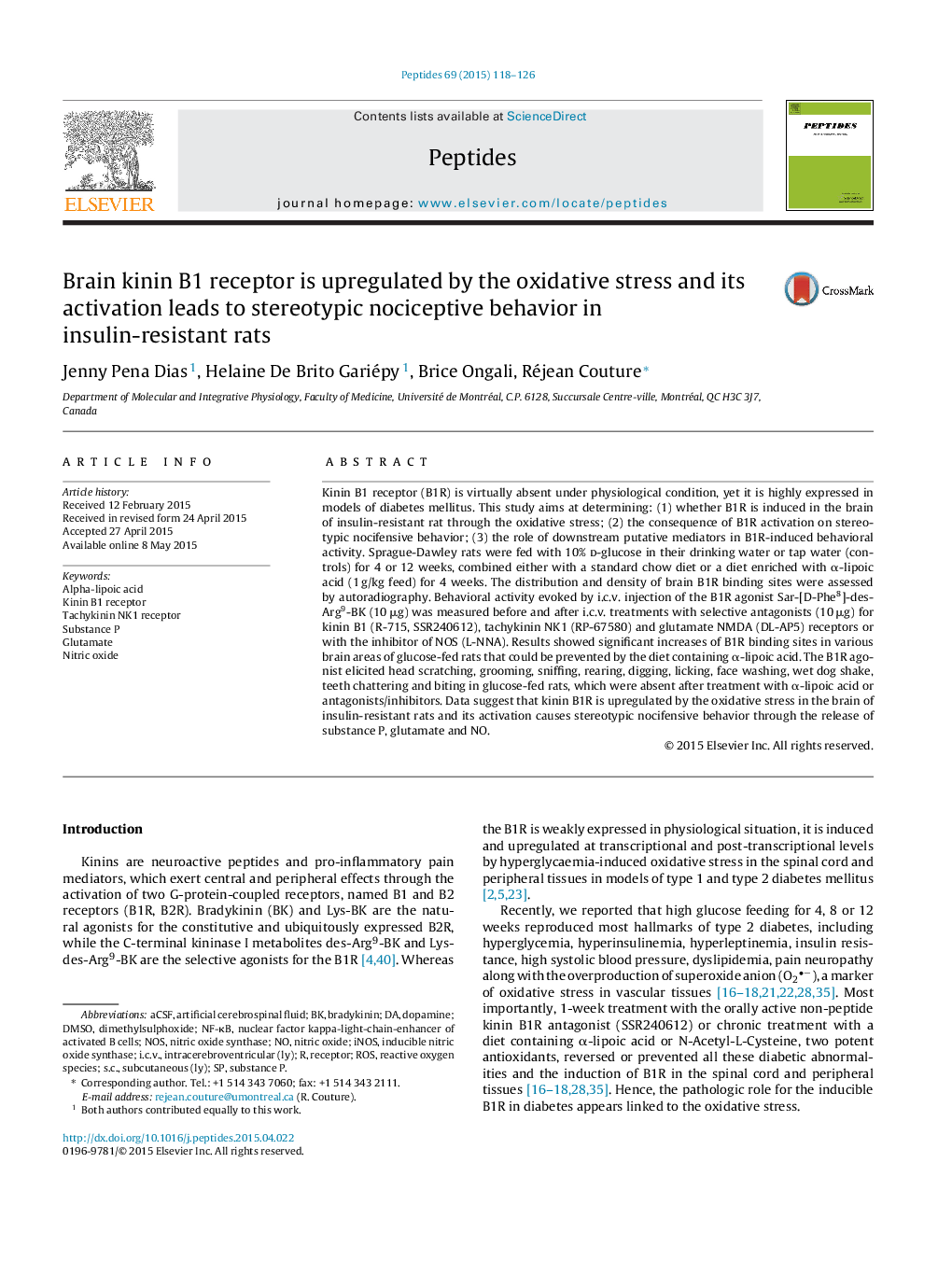| کد مقاله | کد نشریه | سال انتشار | مقاله انگلیسی | نسخه تمام متن |
|---|---|---|---|---|
| 2005938 | 1541710 | 2015 | 9 صفحه PDF | دانلود رایگان |

• Kinin B1 receptor is induced and overexpressed in brain areas of insulin resistant rats.
• Kinin B1 receptor upregulation is mediated by the oxidative stress.
• Kinin B1 receptor agonist administered intracerebroventricularly induces nocifensive behavior.
• B1 receptor-induced behavior is mediated by substance P, glutamate and nitric oxide.
Kinin B1 receptor (B1R) is virtually absent under physiological condition, yet it is highly expressed in models of diabetes mellitus. This study aims at determining: (1) whether B1R is induced in the brain of insulin-resistant rat through the oxidative stress; (2) the consequence of B1R activation on stereotypic nocifensive behavior; (3) the role of downstream putative mediators in B1R-induced behavioral activity. Sprague-Dawley rats were fed with 10% d-glucose in their drinking water or tap water (controls) for 4 or 12 weeks, combined either with a standard chow diet or a diet enriched with α-lipoic acid (1 g/kg feed) for 4 weeks. The distribution and density of brain B1R binding sites were assessed by autoradiography. Behavioral activity evoked by i.c.v. injection of the B1R agonist Sar-[D-Phe8]-des-Arg9-BK (10 μg) was measured before and after i.c.v. treatments with selective antagonists (10 μg) for kinin B1 (R-715, SSR240612), tachykinin NK1 (RP-67580) and glutamate NMDA (DL-AP5) receptors or with the inhibitor of NOS (L-NNA). Results showed significant increases of B1R binding sites in various brain areas of glucose-fed rats that could be prevented by the diet containing α-lipoic acid. The B1R agonist elicited head scratching, grooming, sniffing, rearing, digging, licking, face washing, wet dog shake, teeth chattering and biting in glucose-fed rats, which were absent after treatment with α-lipoic acid or antagonists/inhibitors. Data suggest that kinin B1R is upregulated by the oxidative stress in the brain of insulin-resistant rats and its activation causes stereotypic nocifensive behavior through the release of substance P, glutamate and NO.
Figure optionsDownload as PowerPoint slide
Journal: Peptides - Volume 69, July 2015, Pages 118–126